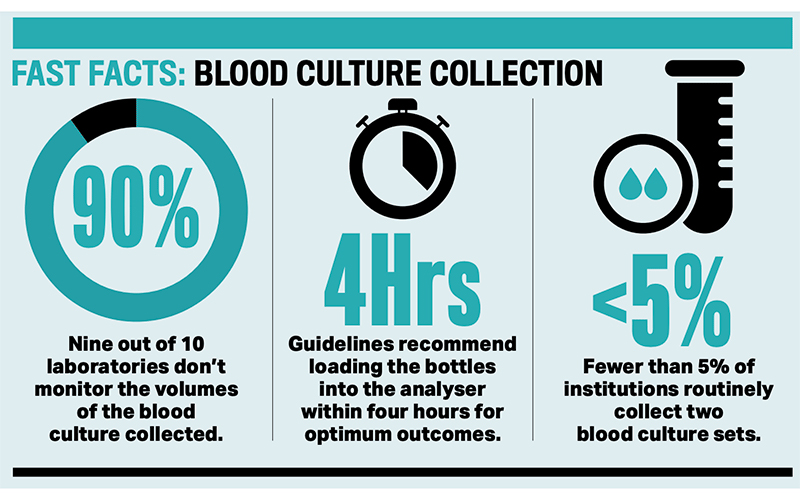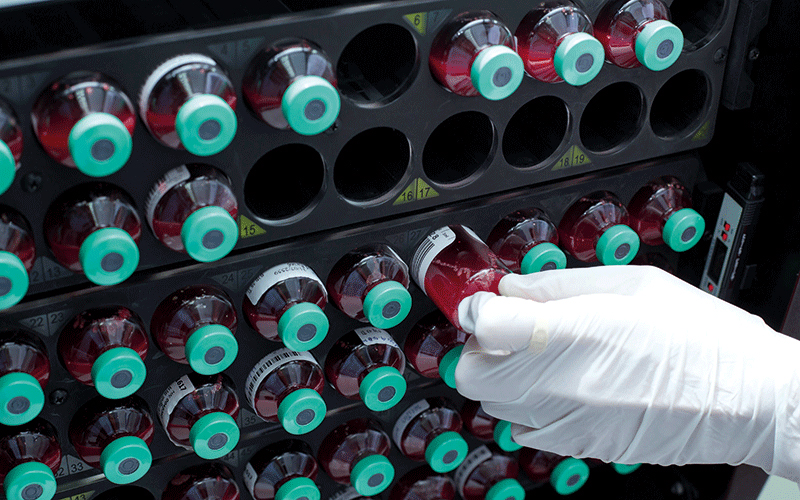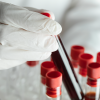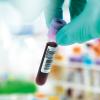IBMS President Debra Padgett with an update following the release of the Improving the Blood Culture Pathway report.

There are around 100,000 bloodstream infections (BSIs) detected every year in the UK. Patients who do not have their BSI treated quickly and appropriately are at high risk of progressing to experience sepsis. Managing sepsis presents substantial challenges for the NHS – in the UK alone it causes over 200,000 hospital admissions and 48,000 deaths per year. Sepsis kills more patients than breast, bowel and prostate cancer combined.
For many patients, if sepsis is caught early, it can be easy to treat, and with earlier diagnosis we could save thousands more lives a year in the UK alone.
NHS England (NHSE), working alongside key stakeholders including the IBMS, has published new recommendations for the blood culture pathway. These are designed to improve the accuracy and efficiency of blood culture testing, which is a critical diagnostic tool for identifying and treating infections.
Calling for action
NHSE has adopted an infection management approach to help achieve the ambitions in the antimicrobial resistance (AMR) national action plan. In 2017/18, a UK-wide survey of blood culture practices was undertaken by the AMR Diagnostic Board, utilising the SMI B37 standards as a reference point. The results indicated that there was considerable scope for improvement. Following the national review, NHS England published the Improving the Blood Culture Pathway report with recommendations to improve patient outcomes and antimicrobial stewardship. A collective effort from all levels is essential to implement the report’s recommendations successfully.
Professor Dame Sue Hill, Chief Scientific Officer at NHSE, Professor Sir Steve Powis, National Medical Director at NHSE and Professor Mark Wilcox, National Clinical Director for Antimicrobial Resistance & Infection Prevention and Control for NHSE, have recently sent a letter to regional medical directors and pathology leaders calling for action to ensure accurate and prompt diagnosis of sepsis and severe infections, stating that this can save lives, decrease the need for long-term care and reduce the burden on healthcare systems.
The recommendations

The Blood Culture Pathway, which was published in February 2023, found that there is significant room for improvement in the way blood cultures are collected, transported, and analysed. Alongside expediting the time to analysis, this guidance seeks to increase the diagnostic yield by increasing the number of blood cultures taken from patients with sepsis and increasing the volume of blood inoculated into blood culture bottles.
“While there may be some concerns about the new recommendations, it is important to recognise the potential benefits”
The report makes a number of recommendations to improve the blood culture pathway. These include:
1. Build upon existing national guidance and best practice – implementing a governance framework across the blood culture pathway. Microbiology staff are unable to improve and develop these pathways in isolation; it is therefore essential that multi-disciplinary teams (MDTs) are formed to provide oversight of the blood culture pathway. There should be a clear governance structure in place, thereby ensuring everyone understands their role, the value of the blood culture pathway and how to monitor the performance of this pathway accurately.
2. Implement local monitoring to identify areas for improvement – promotion of regular local audits in line with national guidance focusing on two main quality indicators:
- Ensure bottles are loaded onto the analyser within four hours of collection
- Collect two sets of two bottles (2 x aerobic and 2 x anaerobic, 4 bottles total) adequately filled with 8–10 mL of blood
3. Antimicrobial stewardship (AMS) and AMR to be a core part of clinical leadership and trust governance with integration of blood culture improvement work into existing governance structures, such as those in place for sepsis, AMR/AMS, and/or infection prevention and control with oversight to help secure a “board to ward” focus on improvement.
4.Improve regulation and accreditation supported by CQC and UKAS to embed best practice.

Concerns with the recommendations
As with any new recommendations, there may be some concerns. One potential concern is the feasibility of implementing these recommendations in practice, particularly in resource- and finance-limited settings where there may be challenges in capacity of existing equipment or providing adequate staffing to manage the significant potential increase in workload.
Increasing the number of cultures taken and subsequently the volume of blood cultured, will undoubtedly result in an increase in BSIs identified. Whilst this will improve patient prognosis, it must be noted that we are also likely to see a significant increase in organisms that may be attributed to blood culture contaminants being identified. This causes diagnostic uncertainty and can lead to increased and unnecessary further investigations and antimicrobial therapy. Renewed effort will be required to reduce contamination rates at source.
We also need to consider our acutely unwell patients where taking the volume of blood now required can be difficult, if not impossible, and go on to cause further issues or complications in their care. There would be no benefit in compromising the standard of the first blood draw in both volume and quality by trying to achieve the required two-set mandate resulting in neither set of bottles being suitable for analysis.
The increased scientific workload must also be considered, not only ensuring that there is a robust supply chain in place for the bottles and consumables required but the capacity on the incubators to achieve the required incubation periods.

Typically, around 12% of cultures currently flag as positive. Processing a positive blood culture involves performing a Gram stain, setting up plates, incubation and reading the culture and sensitivity results and obtaining an identification for the organism(s). Increasing the number of positive blood cultures obtained as a result of increasing the volume of blood sent to the labs is likely to significantly add to the workload on blood culture benches.
Lastly, it is important to note that the success of the new pathway will ultimately depend on the commitment and engagement of healthcare providers and healthcare organisations to follow the guidelines and prioritise the appropriate collection and processing of blood cultures.
Overall, while there may be some concerns about the new recommendations, it is important to recognise the potential benefits they offer in terms of improving the accuracy and efficiency of blood culture testing, leading to improved patient outcomes and promoting responsible use of antibiotics.
Image credit | iStock | Shutterstock | Science Photo Library




